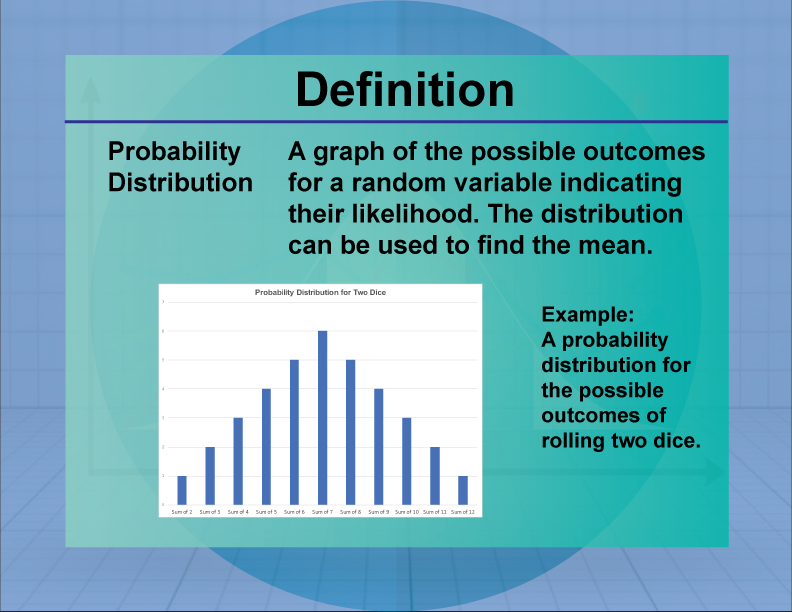
Display Title
Definition--Measures of Central Tendency--Probability Distribution
Display Title
Probability Distribution

Topic
Statistics
Definition
A probability distribution describes how the values of a random variable are distributed.
Description
Probability distributions are fundamental in statistics, providing a mathematical function that gives the probabilities of occurrence of different possible outcomes for an experiment. They are used in various fields such as finance, science, and engineering to model uncertainty and variability. For instance, the normal distribution is a common probability distribution that describes many natural phenomena.
In mathematics education, probability distributions help students understand the behavior of random variables and the concept of randomness. Teachers use probability distributions to explain the likelihood of events and how they can be quantified and analyzed. Students often engage in activities that involve calculating probabilities and interpreting probability distributions, which are critical skills in data analysis and decision-making.

For a complete collection of terms related to Measures of Central Tendency click on this link: Measures of Central Tendency Collection.
| Common Core Standards | CCSS.MATH.CONTENT.HSS.CP.B.6, CCSS.MATH.CONTENT.HSS.CP.B.7, CCSS.MATH.CONTENT.HSS.CP.B.8, CCSS.MATH.CONTENT.HSS.CP.B.9, CCSS.MATH.CONTENT.HSS.MD.A.2, CCSS.MATH.CONTENT.HSS.MD.B.5, CCSS.MATH.CONTENT.HSS.MD.B.5.B, CCSS.MATH.CONTENT.HSS.MD.B.6, CCSS.MATH.CONTENT.HSS.MD.B.7 |
|---|---|
| Grade Range | 6 - 10 |
| Curriculum Nodes |
Algebra • Probability and Data Analysis • Data Analysis |
| Copyright Year | 2020 |
| Keywords | data analysis, measures of central tendency, definitions, glossary term, statistics |